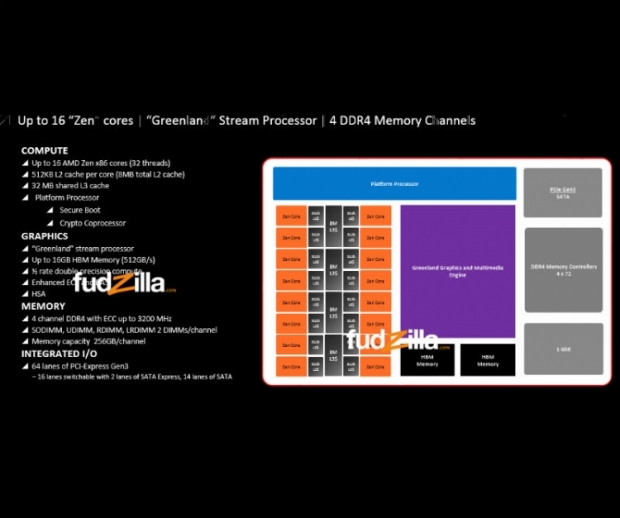What we can confirm is that the 32-core processor actually uses 8 cores per die on four die ona MCM (Multi Chip Module) socketed LGA design.
Each MCM module with 8 cores has two memory channels with up to 2 DIMMs per channel. The maximum TDP for the Opteron Zen 2016 series is set at the standard 140W and there will be a 120W TDP SKU, as well as lower TDP parts.
AMD also has something called Combo Links that combines 8-16 bit links (2 per die) and this link can take the form of xGMI, PCIe, SATA, SATA Express, 10Gbase-KR or SGMII. There will be boards with 1P socket configurations and 2P socket configurations for more than one LGA socketed processor.
Dual socket 2P motherboards support four AMD External Global Memory interconnect xGMI links, or one per die. The standard 2P board comes with maximum of 64 PCIe lanes per socket, 16 SATA laners, four 10GigE and four 1GigE per socket.
AMD relies on coherent interconnect for 2-socket configurations that should enable faster inter-socket communication between two CPUs. The specification looks promising, but it remains to be seen if the instruction per clock rate will improve significantly, and how well can these eight dies interconnected in one MCM package perform against the competition. Servers are a huge growth and return to profitability opportunity for AMD, but Intel won't give this highly profitable market without a serious fight.
The main question is if AMD can make it on time with Zen, if it can deliver these Opterons in volume before Intel moves to newer architectures and nodes.




